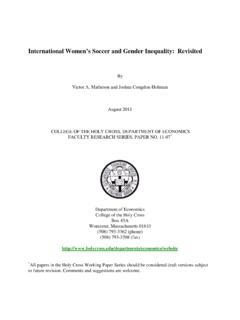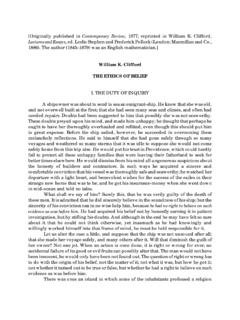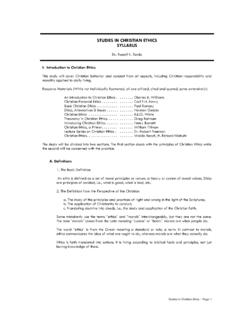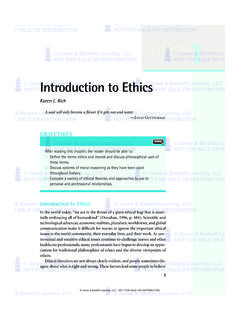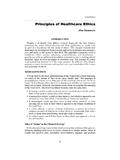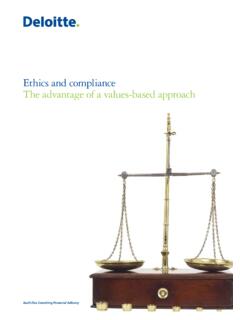Transcription of EIGHT ELEMENTS OF RELIGIONS 1. BELIEF SYSTEM or …
1 EIGHT ELEMENTS OF RELIGIONS1. BELIEF SYSTEM or WORLDVIEW: Many beliefs that fit together in a SYSTEM to makesense of the universe and our place in COMMUNITY: The BELIEF SYSTEM is shared, and its ideals are practiced by a CENTRAL STORIES/MYTHS: Stories that help explain the beliefs of a group; theseare told over and over again and sometimes performed by members of the group. They mayor may not be RITUALS: Beliefs are explained, taught, and made real through ETHICS: Rules about how to behave; these rules are often thought to have come from adeity or supernatural place, but they might also be seen as guidelines created by the groupover CHARACTERISTIC EMOTIONAL EXPERIENCES: Most RELIGIONS share emotions suchas awe, mystery, guilt, joy, devotion, conversion, inner peace, MATERIAL EXPRESSION: RELIGIONS use things to perform rituals or to express orrepresent beliefs, such as: statues, paintings, music, flowers, incense, clothes,architecture, and specific sacred SACREDNESS: RELIGIONS see some things as sacred and some not sacred (or profane).
2 Some objects, actions, people and places may share in the sacredness or express it. The ELEMENTS of Religion in Your LifeIf you do not feel comfortable answering these questions, or if you do not practice areligion, you may find a friend or family member who will share his/her beliefs andpractices with you. Or, if you like, find answers from doing your own research on onespecific religion (it doesn't have to be Judaism, Christianity or Islam).1. BELIEFS: What is one central BELIEF of your religion?2. COMMUNITY: How is your religion shared with others in your religious community?3. CENTRAL STORIES/MYTHS: What is one of the myths or stories from your religion?4. RITUALS: What ritual do you find meaningful in your religion?5. ETHICS: What is one rule from your religion you are supposed to follow?6. EMOTIONAL EXPERIENCES: Have you ever had an emotional religious experience?
3 What was it like?7. MATERIAL EXPRESSION: What is one thing used in your religion? What is it usedfor?8. SACREDNESS: Can you think of a sacred place associated with your religion? Why is itsacred?

